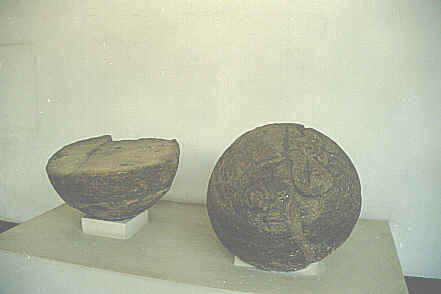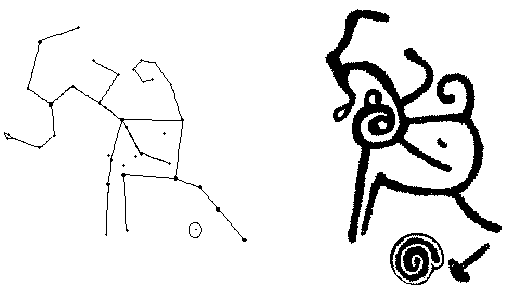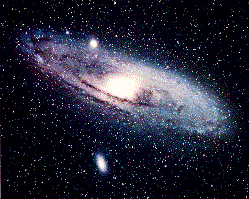

All those who have once visited the Costa Rican National Museum in San José have also had the chance to contemplate the great pre-Columbian stone spheres that enrich the collection of that institution. Walking along the external corridors of the museum, we can see a sphere that stands out among the rest because it is sectioned in two halves and because it shows an intricate petroglyph in one of its hemispheres. That design shows a series of very complicated shapes, engraved with firm traces in the deteriorated surface of the stone.
When I first came across that sphere, more than a decade ago, I was assaulted by curiosity to know what those enigmatic lines represented and meant. Those petroglyphs have been found in the whole national territory and some of its designs, extremely complex, seem to be more a kind of modern abstract art creation than the product of “primitive” people, as we usually refer to our pre-Columbian ancestors.
Geographical maps, ritual signs and even natural formations have been among the explanations given for those designs and that have not satisfactorily solved their mystery. However, there is an additional interpretation which, in lack of adequate context, has not been explored in the totality of the spectrum that it offers. It is the one that identifies those petroglyphs as representations of astronomical character, that is, possible celestial charts engraved in stone whose purpose would have been calendaric and probably ceremonial. Although the idea of an astronomical meaning of the Costa Rican petroglyphs is not originally mine, as we shall see later, I here present an astronomical interpretation of the mentioned engraving.
It all began with the spiral located at the bottom of the design. The conspicuous position of the spiral in the whole and the shape of the petroglyph itself vaguely reminded me of the constellations of Pegasus and Andromeda, in whose neighborhood lies another singular spiral shape: the M31 galaxy.


Figs. 1 and 2. The sectioned stone sphere showing part of the petroglyph
in one of its hemispheres. (Photos by Daniel Brenes)
From this idea I propose the hypothesis that that petroglyph be a representation of a pre-Columbian constellation, formed by stars from the before-mentioned constellations and some of its closest neighbors. It is important to remember that the shape of a constellation varies according to the interpretation that each culture assigns to a certain group of stars in the sky. Since the shapes of the Pegasus and Andromeda constellations, as we know them, have origin in the Mediterranean cultures, it can be expected that a pre-Columbian constellation in the same region of the sky will gather a different cluster of stars, resulting in something very different from a winged horse and a celestial princess. Based upon this fact I compared the lines and points that form the stone engraving with the groups of stars in that celestial region, which extends from 43º 07' to -07º 47' of the declination.

Fig. 3 Main constellations and stars included in this study.

Fig. 4 Constellation based on the petroglyph. The lower circle represents the location of M31.

Fig. 5 Comparison between the resulting constellation and the petroglyph.

Fig. 6 Concordant points in both figures.
The marked numbers are:
1- M31 Andromeda's galaxy
2- Mirach (Beta Andromeda)
3- Alpheratz (Alpha Andromeda)
4- Omicron Andromeda
5- HR8632 in the Lacerta constellation (Yale catalogue of stars)
6- Scheat (Beta Pegasus)
7- Psi Pegasus
8- Pi Pegasus
9- Algenib (Gamma Pegasus)
10- Theta, Iota, Lambda, Kappa, Gamma and Omega Pisces
11- Beta Pisces
12- Eta Aquarius
13- Markab (Alpha Pegasus)
14- Homam (Zeta Pegasus)
15- Theta Pegasus
16- Ancha (Theta Aquarius)
17- Sadalsud (Beta Aquarius)
18- Alpha Equuleus
19- Enif (Epsilon Pegasus)
20- HR8313 in the Pegasus constellation (Yale catalogue of stars)
21- HR8173 in the Pegasus constellation (Yale catalogue of stars)
22- Delphinus constellation
?- Figure not yet defined in astronomical context
The result of this comparison is a constellation with a total of twenty-two stars and main groups, pointed out without much difficulty since they practically agreed with the most outstanding objects and the intersections of the lines shown in the engraving. Therefore, the similitude of both figures becomes self-evident. The group includes stars belonging to the constellations of Andromeda, Pegasus, Pisces, Aquarius, Dolphin, Alligator and the Minor Horse in its arrangement.
From the list of concordant points, number 13 is one of the most singular , since it presents a spiral joined to a curl, and it stands out from the rest of the engraving because of its size. The engraver of the petroglyph emphasized this star probably because he considered it relevant, but for unknown reasons. Besides that, I could not define the shape in the lower right side, near the spiral, since I could not relate it to any astronomical object or group in that region of the sky that resembles it.
I must emphasize the fact that since the petroglyph is engraved in a sphere, it is possible to reproduce the apparent movement of the constellation in the sky during the night, due to the rotation of the Earth. Rotating the sphere from left to right, over an axis equivalent to a fixed stellar North and located under the petroglyph, a representation of the East-West movement of the constellation is obtained. Then, the sphere would be not only an astronomical chart but also a rudimentary but practical planetarium.
After enumerating these clues, I think that there is still a detail to be solved: How could the creators of the petroglyph know about the spiral shape of M31 when, although visible to the naked eye, this galaxy appears to be just a small spot in the sky? To deny the possibility that our ancestors had such knowledge without having a telescope or any other optical instrument, could be a pitiful underestimation of their abilities, some of them beyond our comprehension, conditioned by the orthodox rationalism of our times. And the fact is that, by representing M31 out of proportion in size and in its front view, not inclined as it can be seen through a telescope, our indigenous people were possibly trying to convey the importance that such knowledge implied, for them and for us, their successors, as well.

Fig. 7 M31 Andromeda Galaxy
The shape that the constellation could represent is difficult to interpret given its complexity, but it seems to be a zoomorphic figure, perhaps a quadruped. In the context of American fauna it could represent a dog, a jaguar or perhaps a monkey. Moreover, it is not the first time that an astronomical interpretation for the Costa Rican petroglyphs is suggested.
On the March 25, 1979 edition of the local newspaper “La Nación”, Mr. Michael O’Reilly proposed that the circular petroglyph found in the main mount of the pre-Columbian settlement of Guayabo, Turrialba, province of Cartago, could have functioned as a very precise calendar. The calendar, making use of astronomical objects of low magnitude, delivered details of dates such as the solstices, the longest day of the year and the duration of the annual rainy season.
Even though the hypothesis of O’Reilly lacked context, the idea was founded on logical and rational basis obtained by a methodical comparison. To consider that our pre-Columbian ancestors had knowledge of astronomy to which they gave shape in their petroglyphs becomes a rich and valuable vein for interpretations, since it shows a new aspect of their thinking and knowledge about the cycles in Nature, which, to our disgrace, we have buried in oblivion.
Edwin Quesada.
Translated by William Vargas.
![]() Versión en Castellano
Versión en Castellano
![]() Versió Català
Versió Català
©1997 All rights reserved.